When Trans Activism Becomes Government Policy
Even as other nations finally move to protect dysphoric youth from disfiguring treatments, Canadian politicians and educators continue to promote state-funded ‘gender journeys.’
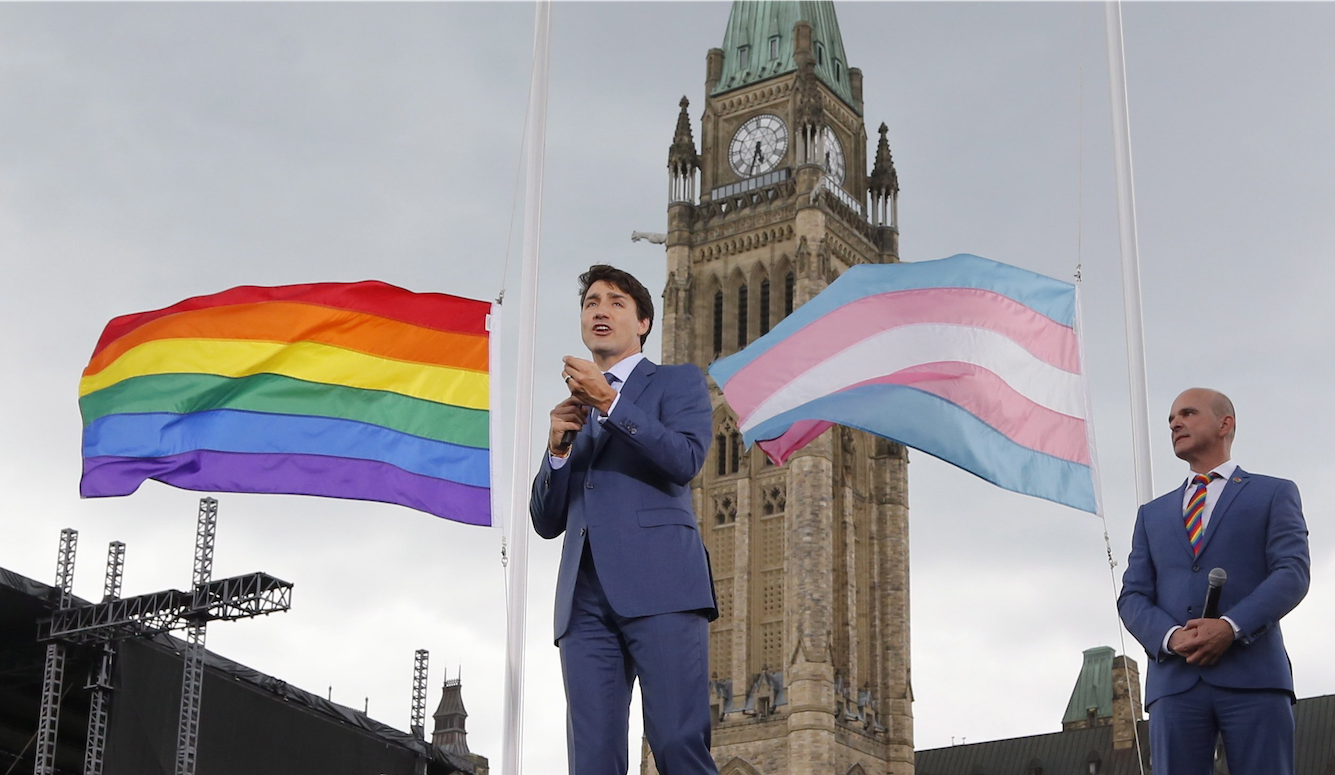
Two months ago, Canada’s Globe and Mail newspaper published a story about one Nathaniel Le May, a 41-year-old civil servant seeking government funding for “gender-affirming” surgery.
Le May, who identifies as “transmasculine non-binary,” is seeking a phalloplasty (an artificial penis) but not a vaginectomy (vagina removal). In other words, Le May is a biological woman who wants to have both a vagina and a penis, at taxpayer expense.
This being Canada, Le May’s provincial health insurer—the Ontario Health Insurance Plan (OHIP)—was more than happy to bankroll the pseudo-penis. But phalloplasties typically aren’t performed on women unless their female reproductive organs are removed, so as to avoid hormonal complications that can elevate the risk of cervical cancer.
/cloudfront-us-east-1.images.arcpublishing.com/tgam/YOTM5V42AJDYPPUCMQMD4YU44Q.JPG)
Le May, however, wanted both sets of parts, cancer risks notwithstanding, and so took the case to a medical appeals board. The Globe story announced the happy resolution: Government officials caved in, even before the appeal was heard.
Indeed, they capitulated so quickly that Le May seems upset to have been denied a bigger legal stage; and so is now (retroactively) pursuing a complaint with the Ontario Human Rights Commission. Frank Nasca, Le May’s legal assistant, complains that the insurer failed to issue a suitably dramatic public statement indicating a “commitment to systemic change for the trans community.” (“Mx. Nasca,” the Globe informs us, is also trans.)
The Canadian media has been full of this kind of story for years now—fawning profiles of students, government workers, artists, and activists with exotic gender descriptors and tales of transphobic woe. As in this case, these dispatches tend to be peppered with jargon that, just a few years ago, would have been confined to niche internet subcultures. What does it even mean to be “transmasculine non-binary”? The reporter doesn’t tell us, and probably doesn’t know. We’re all just supposed to pretend that it’s a real thing.
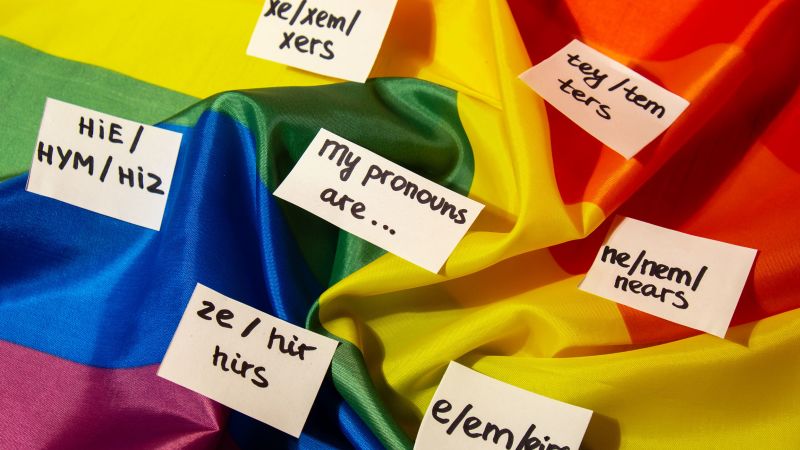
All radicalized social movements attract a backlash. And genderwang has proven no exception—as evidenced by the brutal reaction to CNN’s recently published Guide to Neopronouns, from ae to ze. The guide introduced CNN readers to something called “nounself pronouns,” which “use nature and other inspirations as non-binary or genderless descriptors.” (Example: “For someone who uses the nounself pronoun ‘leaf,’ that may look like: ‘I hope leaf knows how proud we are that leaf is getting to know leafself better!’”) Just a few years ago, this kind of article would have been politely ignored by mainstream readers, who were willing to dismiss this mangling of the English language as a mere campus fad. But things changed in 2022, when a biological man named Lia Thomas made a mockery of the NCAA women’s swimming championships. For the first time, it dawned on the average citizen that, yes, there are ideologues out there who actually believe (or, at least, pretend to believe) that saying “I’m a woman” acts as a sort of magic spell upon the male body.
Since then, a growing list of international sports organizations have been setting down rules to ban trans-identified biological men from competing in protected female categories. (Even chess is following suit.) And in the UK, a major victory for common sense was scored last month when the country’s Labour Party finally acknowledged the fairly obvious (but formerly unutterable) truths that (1) self-declared “gender identity” differs from actual biological sex; (2) trans rights must be balanced against the need for girls and women to maintain protected sex-based spaces; and (3) public policies based on unfettered self-identification are untenable.
It was a watershed event—marking the first time, since the mainstreaming of gender ideology among progressives in the late 2010s, that any major left-wing political party in the English-speaking world had uttered such (again, perfectly obvious) truths explicitly.
In Canada, on the other hand, this pendulum swing back toward gender sanity still seems like it’s a long way off. Our Liberal Prime Minister, Justin Trudeau, has gone in hard for transgender boosterism—so hard that he seems to have left himself with no politically attractive way of backtracking now that the movement is losing popularity.
Team Canada’s gold medal win in soccer was historic in so many ways. @TheQuinny5, became the first openly transgender and non-binary athlete to win an Olympic medal. Quinn, your win today will inspire so many to keep playing and to keep pursuing their dreams. 🏳️⚧️🏳️🌈
— Justin Trudeau (@JustinTrudeau) August 6, 2021
Gender-bending spectacles and hashtags have become a big part of the Liberal effort to siphon young progressives from Canada’s (even more left-of-centre) New Democratic Party. And so one regularly hears Trudeau’s cabinet ministers babbling about “heteronormative and cis-normative” boogeymen, much in the style of academics at a gender symposium or bouncy-headed progressive tiktokkers. This past June, some of these ministers even hosted an all-ages drag-queen show on Parliament Hill to showcase their rainbow allyship.
Thank-you to everyone who joined us for our #PrideSeason Kick-Off celebration, with a special drag performance from the fabulous Adrianna Exposee.
— Marci Ien (@MarciIen) June 9, 2023
Drag is a vibrant and diverse form of art, it's about expressing yourself and pushing boundaries. pic.twitter.com/DbYcGJZKlJ
In 2022, Trudeau’s government announced something called a “federal 2SLGBTQI+ action plan,” which was described as “a whole-of-government approach to achieve a future where everyone in Canada is truly free to be who they are and love who they love.” This would be unobjectionable—admirable, in fact—if it weren’t obvious that such rhetoric now embeds a coded demand that men should be allowed free access to women’s locker rooms, sports leagues, rape-crisis shelters, and prison cells. Trudeau, who has traditionally marketed himself as a feminist, seems fine with men invading all of these spaces.

One outspoken activist whose operation is funded by the federal government is Fae Johnstone, a trans-identified biological man who demanded, in 2022, “a political environment in which [women who insist upon the reality of biological sex] are so vilified [that] they don’t dare speak their views publicly.” Less than a year after this misogynistic outburst, Johnstone was honoured as Grand Marshall of Ottawa’s pride parade.
Pictured next to the Minister for Women and Gender Equality is none other than Fae Johnstone, who wants "a political environment in which TERFs (read: women) are so vilified they don't dare speak their views publicly, let alone act on them". This is who our government listens to. pic.twitter.com/gHPAHNbuuS
— Mia (@_CryMiaRiver) August 29, 2022
As noted last year in Quillette, Trudeau’s 2022 “action plan” instructed Canadians to adopt the term “2SLGBTQI+” in place of “LGBT”—on the basis that fronting “2S” (signifying Indigenous “Two-Spirit” individuals) “places the experiences of Indigenous 2SLGBTQI+ communities at the foreground as the first 2SLGBTQI+ peoples in North America.”
In fact, “Two-Spirit” is a faddish neologism that was invented in the late twentieth century. And even Canadians who champion the term’s usage have admitted that they can’t really explain what it means. Nevertheless, it gives the gloss of ancient Indigenous gender wisdom to what’s actually an upper-class white Western academic movement. Thus do Canadian activists now delight in advancing the (completely false) claim that the country’s original Indigenous societies were chock full of multi-spirited proto-trans and non-binary people who’d never even heard of the male-female “gender binary” until racist colonialists forced it upon them at gunpoint.

Many Canadian school administrators now openly instruct teachers to conspire with students to keep gender transitions secret from parents. Ontario’s Halton District School Board became particularly infamous this year when its trustees dithered for weeks over whether it might be considered transphobic to discipline a male teacher who taught shop class while wearing gigantic strap-on boobs inspired by Japanese fetish porn. At the Ottawa-Carleton District School Board, a “trans and gender diverse student support coordinator” named Sara Savoia told the world that Jesus was a drag queen. (At her former job, she’d publicly boasted of giving tampons to grade-five students for use in their art projects.)

Nor have Canadian medical authorities—whom one might suppose were capable of distinguishing men from women—provided Canadians with a voice of reason. Academics at the University of British Columbia’s medical school now claim that “sex and gender binaries” are a “colonial imposition” “entangled with white, Western and Christian worldviews.” And a nurse in the province, Amy Eileen Hamm, is enduring a lengthy investigation by her professional regulator on the basis of her declared belief in the reality of biological sex.

Following the usual pattern of rhetorical deflection, everything we are writing here will be dismissed by progressive Canadian critics as an expression of conservative transphobia. But that accusation is losing its sting now that such socially liberal nations as Sweden, Finland, and Norway have started tightening their national policies in regard to the transition of minors. Here in North America, meanwhile, some of the strongest push-back against gender cultism is now coming from feminists and LGB activists, many of whom (rightly) see the campaign to erase biological sex as harmful to their own (sex-based) interests as women, lesbians, and gay men.

It’s also harmful in a more literal, physical sense: The number of Canadian teen girls and young women lining up to get their breasts cut off—on the basis that they were “born in the wrong body”—has been exploding in recent years.
For many therapists, this movement has clearly become a means to explain away a child’s depression, loneliness, or trauma in a way that offers families the tantalizing possibility of a decisive fix. This tendency is reinforced by school curricula, public-service announcements, and media reports, in which transition is presented as a wondrous “gender journey” into a magical land of self-fulfillment. Well-meaning parents, having been told that a failure to instantly “affirm” their child’s claimed trans identity might prompt self-harm, or even suicide, naturally fall into line.

Needless to say, Canadian authorities also have supported the ongoing farce by which trans women—i.e., biological men—chalk up victories in female sports categories. Just this month, Anne Andres, a male powerlifter who identifies as a woman, demolished the female competition at a Canadian Powerlifting Union (CPU) event. “Andres’ total powerlifting score was over 200 kg more than the top-performing female in the same class—597.5 kg versus SuJan Gil’s 387.5 kg total,” reported Reduxx. “Andres’ total would have placed him amongst the top-performing male powerlifters in the entire championship had he participated in the men’s category.”

Andres’ participation in the female tournament was entirely consistent with CPU rules, which state that, in general, “trans athletes should be able to participate in the gender with which they identify.” When challenged, CPU officials claimed that they’re simply following applicable Canadian human-rights law.
In the United States, these issues are at the centre of an ongoing culture war, with governments weighing in on both sides according to their partisan affiliation. On March 31, Transgender Day of Visibility (one of at least six annual “awareness dates” explicitly celebrating transgenderism), President Joe Biden praised “the strength, joy, and absolute courage” of trans people, and ticked off the many initiatives his Democratic administration had launched to advance their interests. By contrast, Biden’s Republican opponents, especially at the state level, have advanced draconian laws that curtail access to transition therapies—in some cases taking positions that may legitimately be described as (to use a much overused term) transphobic.

But in Canada, the propaganda flows in only one direction, as even the country’s (nominally) Conservative politicians have stayed out of the fray for fear of being labelled as bigots by our clubby, government-subsidized media.
There are many things to dislike about America’s deadlocked culture war. And nothing in this essay should be read as praise for some of the heavy-handed legislative methods being used to block all forms of therapy for trans-identified children in Republican-controlled states—which amounts to its own kind of extremism. Gender dysphoria is a real, if relatively rare, condition. And in some cases, those afflicted by persistent and severe cases really can benefit from transition therapies.
But at least America’s combative political culture ensures that neither side can pursue radicalized policies that go unchecked on a national level. Canada’s wholesale acceptance of trans-activist demands offers a case study of what happens when one side is permitted to completely capture the commanding heights of social policy without any real political opposition.

In many cases, Canadian gender propaganda has taken on the tone of spiritual literature, assuring troubled youth that a promised land is around the corner once they embrace the revealed truth that their gendered soul is trapped in the wrong flesh vessel. (As part of this mash-up of progressive gender dogma and old-time religion, the Anglican Church of Canada has even produced something called a “Pastoral Liturgy for Journeys of Gender Affirmation & Transition.”)
Moments ago, "Pastoral Liturgies for Journeys of Gender Affirmation & Transition"—rites and prayers supplemental to the BAS prayer book (+ first known authorized liturgies of their kind in @AnglicanWorld)— was authorized by our 43rd General Synod. #GS2023 https://t.co/5lzuWWtvR7 pic.twitter.com/LPkfD9198U
— Anglican Church of Canada—ACC (@generalsynod) June 30, 2023
The province-wide Rainbow Health Ontario service, for instance, instructs gender-dysphoric youth that by “suppressing puberty” (with drugs, of course), they can “improve mental well-being, reduce depression and anxiety, lessen self-harming thoughts and behaviours, [and] improve social interactions with peers.” In B.C., a provincial outfit called Trans Care BC gives tips to trans-identified youth on how to deepen their faith in their newly discovered gender identity—such as “read or listen to books by trans authors,” “make art about your gender: collage, movies, cartoons, music, etc.,” and, more bluntly, “go to drag shows.” Does this sound like neutral therapeutic advice—or a form of recruitment into a cultish social movement?
This being Canada, however, the cutting-edge trend of renouncing one’s biological mugglehood in favour of transgender (or non-binary) gender wizardry has run headlong into an old problem that’s been around since the dawn of socialized medicine: long waiting lists. Despite the heavy demand for trans scalpel work, surgical capacity in Canada’s public system is limited by underfunding. And only two facilities, B.C.’s Vancouver General Hospital and Ontario’s Women’s College Hospital, are known to offer genital surgeries.
But Canadian health care law requires that any services deemed medically “necessary” must be provided one way or another. And so some of the overflow patients are being sent (at taxpayer expense, of course) to facilities such as Centre Métropolitain De Chirurgie, a busy private clinic in Montreal that apparently performs hundreds of trans surgeries per year (some on international patients).
The increasing flow of top-surgery referrals, meanwhile, has been directed in part to the private McLean Clinic in Mississauga, Ontario, which boasts of being “just 10 minutes from Toronto’s Pearson International Airport, and “conveniently located next to the beautiful Novotel Hotel and directly across the bustling Square One Shopping Centre.” Thus has Canadian progressives’ longstanding aversion to private medicine gone by the wayside when it comes to the apparently urgent task of lopping off pronoun-incongruent body parts.

In B.C., meanwhile, the annual rate of “gender-affirming upper surgeries” has skyrocketed from low double digits a decade ago to more than 600 in the early 2020s (though it hit a plateau during COVID, when clinics were shuttered). The province boasts that its programming is being scaled up to offer “the full spectrum of genital reconstruction surgeries including vaginoplasty, vulvoplasty, phalloplasty, and metoidioplasty procedures,” and that its officials are working “to expand provincial access” to such surgeries. The macabre premise here is that every chopped-off body part represents a data point on the march of human progress.
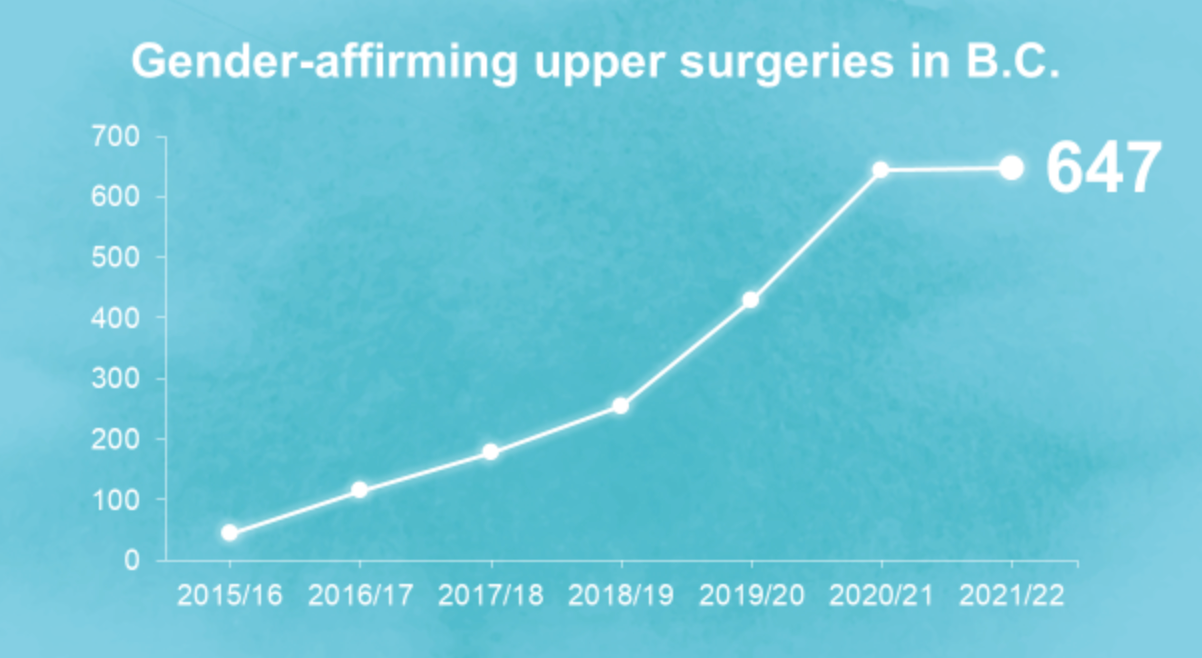
As it happens, getting “access” doesn’t seem to be much of a problem for most Canadian trans-identified teenagers. In the case of top surgery, one typically needs a referral letter from a single doctor. For genital surgery, two letters are required—one from a doctor (not necessarily a specialist) and one from a therapist, social worker, or nurse-practitioner who identifies as a gender expert. If finding a free gender clinic is a hassle, private businesses are now springing up to offer a quick virtual assessment and a reference letter for a mere $199. “We are anti-oppression and understand the negative clinical experiences our patients may have had in the past,” promises Ontario’s Foria Clinic. “We prioritize your physical and mental well-being in all interactions.” The tone here leads one to suspect that few letter-seeking applicants come away disappointed.
Indeed, Canada’s provincial health authorities have turned themselves into veritable plastic-surgery emporia for those sailing forth on their “gender journeys”—offering not only government-paid breast amputation and construction, phalloplasties, vaginoplasties, castrations, testicular implants, urethral extensions, clitoral elongations, but also add-ons, such as laser hair removal so that your scrotal public hair doesn’t get caught inside your neovagina. The remote northern territory of Yukon even offers paid-for facial-feminization surgery (very pricey), “body contouring,” vocal surgery, and follow-on voice therapy.
In the UK, the backlash against this ghoulish industry began in earnest with the scandalous collapse of the Tavistock youth gender clinic, which was then the world’s largest facility of its type—amid reports that Tavistock clinicians were rushing confused teenagers through irreversible surgeries following hasty pro forma procedures (the case of Keira Bell having become particularly infamous). While Canada’s gender profiteers haven’t yet faced this type of (inevitable) legal reckoning, some practitioners are starting to speak out.

This includes Aaron Kimberly, a registered nurse with a specialty in mental health who has counselled hundreds of young people at a B.C. gender clinic. “We’re praising people who use the medical system to manufacture imaginary personas of all kinds,” Kimberly wrote recently. “We’re institutionalizing the recruitment of children into this movement, many of whom will alter their healthy bodies needlessly.”
Kimberly is a self-identified transsexual man, now in his 40s. A one-time butch lesbian, he transitioned at age 30, and feels more comfortable as a result. But he emphasizes that transition is no cure-all for psychological distress, and warns that several of his trans friends regret their decision to transition.
Important op-ed by @Aaron_GDAC about what he didn't understand before transitioning & what he understood after. "You would think that today’s gender revolution would make things easier on kids like me.. [My transition] was largely based on misinformation." https://t.co/SGOjSb8JkA
— Lisa Selin Davis (@LisaSelinDavis) June 26, 2022
“I don’t want to frame this as ‘gender dysphoria isn’t real,’” he told the media. “It is. But there are a lot of different drivers for why people want to medicalize their bodies and transition. Some of these youth [cases] are very complex. They have autism diagnoses, PTSD, a background of trauma.”
Some have no gender dysphoria at all, but just want people to see them as trans. “It doesn’t seem right to just rubber stamp them and move them along.”
Consistent with the evolving consensus in the UK and Scandinavia, Kimberly believes in going slow. He also believes that trans-presenting youth need to know if their transition hopes might be unrealistic. In most cases, no amount of drugs and surgeries, or facial feminization will transform them into people who convincingly pass as the other sex.
While Kimberly felt fulfilled by his work as a gender clinician, he says he was effectively forced out by activists, some in the employ of the government, who insisted that teenagers should have a largely unfettered right to alter their bodies according to their gender beliefs. Since then, Kimberly, who’s found new employment unconnected with gender therapy, has helped create a group called Gender Dysphoria Alliance. One of its goals is to inform the public conversation about gender dysphoria through the voices of those who have detransitioned. Like Kimberly, some of the group’s other members use the older term “transsexual” as a form of self-identification, instead of “transgender,” to signal their adherence to a more realistic understanding of the limits of transition.
Kimberly’s critiques highlight the fairly obvious contradictions embedded in trans-activist demands. On the one hand, they typically insist that gender dysphoria shouldn’t be seen as an affliction, but rather as a natural (perhaps even welcome) outgrowth of the soul-like gender spirit that supposedly infuses all of us. On the other hand, we are simultaneously warned that many trans people will experience crippling psychic pain if they do not receive immediate access to surgeries and a lifelong program of cross-sex hormones. That sounds a lot like a serious medical condition rather than some kind of cosmic gender journey, no?
In every normal medical context, Canadian doctors require a formal diagnosis before offering patients risky treatment programs. Only when it comes to those who claim to channel an opposite-sex gender spirit is it proposed that such safeguards be dispensed with—even, as Nathaniel Le May’s case shows, when the risk of a deadly side effect hovers in the background.
There’s also a genuinely unsettling gulf between the upbeat public messaging around trans therapy—which tends to involve anthropomorphic gingerbread men and winking unicorns who inhabit a land of endless rainbows—and the grim reality of post-op life. (Of particular note is “Gegi,” a creepy mascot created by an in-house activist at a publicly funded Ontario university, who tells gender-distressed kids, “I can’t wait to meet you.”)
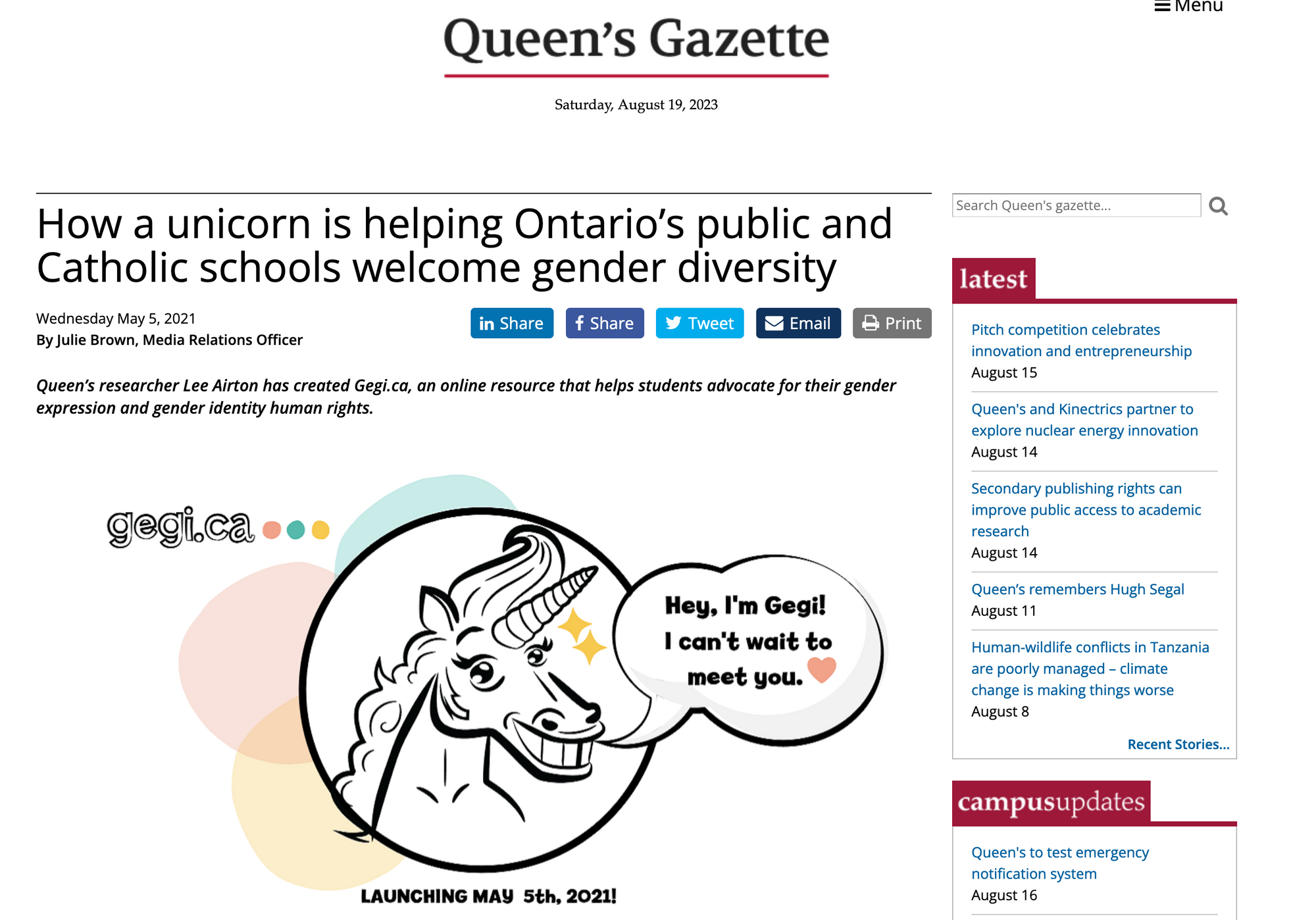
Consider the medical reality faced by women who seek to be masculinized with something called a metiodioplasty, whereby a micro-penis is created by cutting into the tissue around the clitoris in order to make it longer, with the labia being fashioned into a faux-scrotum. The fake scrotum can then be filled with implants that resemble testicles. It will surprise no one to learn that the complication rate is high, and that additional medical procedures are often required. Penetrative sexual intercourse isn’t possible. These are realities that “Gegi” doesn’t like to talk about.

An even more radical option for women who wish to transform themselves into something resembling men is phalloplasty, which involves creating a larger artificial penis, typically with a wide flap of tissue harvested from the forearm. (Patients can pick their preferred size.) The patient’s urethra is extended through the artificial penis so that she is able, hopefully, to pee standing up. (This is apparently one of the main clinical measures of success for such procedures.) The ersatz penis requires further artificial assistance, in the form of pumps or inserts, to become erect, and sexual sensation is not guaranteed. Incontinence is a common complication, and sometimes the thing acts like a faulty shower head.
Vaginoplasty, the construction of an artificial vaginal canal, generally involves inverting the penis and using the tissue to form the walls of a neovagina. It, too, comes with myriad complications, including fistulas (abnormal connections between body parts) and infections (caused by pubic hair inside the vagina). Post-operative sexual pleasure is not guaranteed. And patients must dilate their new opening as long as they live in order to keep it from closing up, since one’s body treats the cavity as a wound.
The science of genital surgery is still a work in progress, to put it mildly. And data on long-term outcomes are sketchy, in part because those who have the best access to such numbers often have a financial incentive to keep media focused on hand-picked success stories involving telegenic patients. Private clinics, where many surgeries are performed, typically do not perform systematic patient follow-ups or publicize complication rates.
A rare cautionary note was struck in a recently published Journal of Sexual Medicine paper co-authored by Dr. Yonah Krakowsky, the Medical Lead at the Transition Related Surgery Program run out of the University of Toronto’s Urology department. In a study of medical complications related to metoidioplasty in 74 patients, researchers found urethral complications in 57% of patients; as well as fistulas, permanent fistulas, and urethral strictures in, respectively, 46%, 36%, and 19% of patients. Common patient-reported symptoms included pain (54%), vaginal bleeding (42%), and poor sexual function (34%).

Some women who’ve gone through this kind of medical ordeal are suing their former therapists and doctors—such as Ontario’s Michelle Zacchinga, 34, who started transition in 2010, after her therapist called her an “ideal candidate” for hormone therapy. Later, she had her breasts amputated and her uterus removed. Today, she says her real problems were depression, ADHD, and other undiagnosed mental conditions that can’t be solved with a surgeon’s knife. Her statement of claim alleges that the defendants “permitted Michelle to self-diagnose as transgender and prescribe her own treatment without providing a differential diagnosis or proposing alternative treatments.”
“I will live the rest of my life without breasts, with a deepened voice and male-pattern balding, and without the ability to get pregnant,” she says. “Removing my completely healthy uterus is my greatest regret.”
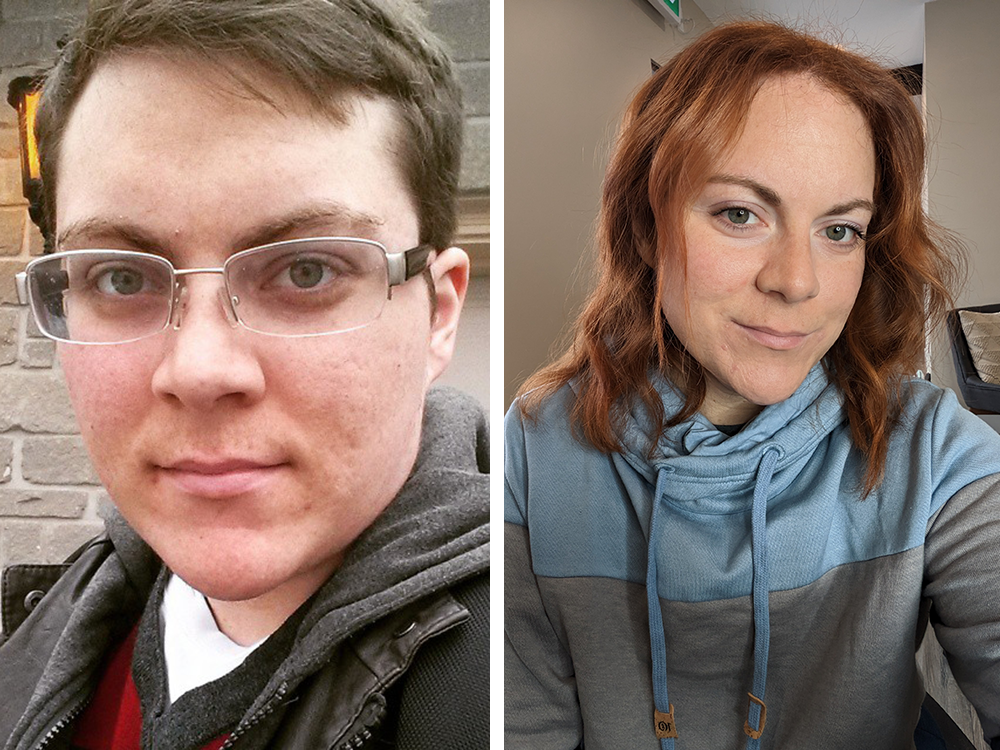
Lois Cardinal is another alleged victim. In this case, doctors tried to turn an Indigenous man into a woman. Cardinal lives on the Saddle Lake Cree reserve in northern Alberta, where she (Cardinal prefers female pronouns) had grown up as an effeminate boy. She says she had no concept of the term “gay,” but was an outsider who was attracted to boys and badly bullied. At 18, addicted and depressed, she wound up as a psychiatric patient in Edmonton, where a doctor put her on estrogen and allegedly told her she should have sex-change surgery. “He wanted to turn me into a straight woman,” she recalls.
Cardinal trusted the system. At 21, she found herself at the aforementioned Centre Métropolitain De Chirurgie in Montreal, only dimly aware of the lifetime impacts of her decision. The aftermath has not gone well. Her depression did not lift. And her neovagina gives her constant trouble: “I have to keep dilating for the rest of my life, or else it will collapse and create an infection that could kill me.”
At 35, she is well aware that instead of being a straight Indigenous woman, she is actually a gay Indigenous man who has been castrated with the encouragement of the (largely white) public-health establishment—a tragically ironic result given the current Canadian focus on making amends for the genocidal policies inflicted on Indigenous peoples, which included the forcible sterilization of women.
Cardinal also says that she can’t get adequate local medical support. A female doctor, she claims, actually brushed her off by telling her that “vaginal atrophy is very common in older women like us.”
The worst torture of all for Cardinal is her unshakable feeling of regret. “What’s done is done,” she says bitterly. “People like me can never [truly] detransition. How do you unsterilize the Indian?”
When Canadians transition, they can become media rock stars, lovingly fawned over by the CBC, and praised by reporters for embracing their “authentic” identities (even once they keep transitioning to new “authentic” identities, as with serial gender-change addict Amanda Jetté Knox). But when trans-identified Canadians express pain or regret about a transition, those same reporters stare at their shoes.
Many of our followers will know who this person is. Knox changes identities like a chameleon on steroids, medically transitioned her (oops! "their/his") child, and is part of a "polycule" with her MTF spouse & several other MTFs. Some make fun of her, but . pic.twitter.com/vKqvNiPRaz
— 4thWaveNow (@4th_WaveNow) June 20, 2023
Reversing the effects of this propaganda will require more than just a change of government in Ottawa and the provincial capitals, since the mission to proselytize youth “gender journeys” has begun to seep into the administrative marrow of public service. In B.C., for instance, the province’s Representative for Children and Youth just published a propaganda document entitled The Right to Thrive: An Urgent Call to Recognize, Respect and Nurture Two Spirit, Trans, Non-Binary and other Gender Diverse Children and Youth, with chapter titles such as “Trans and Non-binary Gender Identities are Sources of Joy and Liberation,” and “Embracing Two Spirit Identity as a Source of Freedom.” (It also provides readers with yet another unpronounceable acronym for all of us to learn: 2STNBGD, for “Two Spirit, transgender, non-binary and other gender diverse people.”)

The jargon-riddled manifestos, the utopian promises of a better life, the vicious attacks on dissenters, the belief in self-mutilation as a path to fulfillment—these are the characteristics of a proselytizing cult, not a normal anti-discrimination campaign. Restoring sanity to Canada’s public conversation about gender dysphoria will take years. And it’s a disgrace to the nation’s leadership in all spheres that, even following the parade of tragicomic scandals described above, this process of reform hasn’t even truly begun.




















